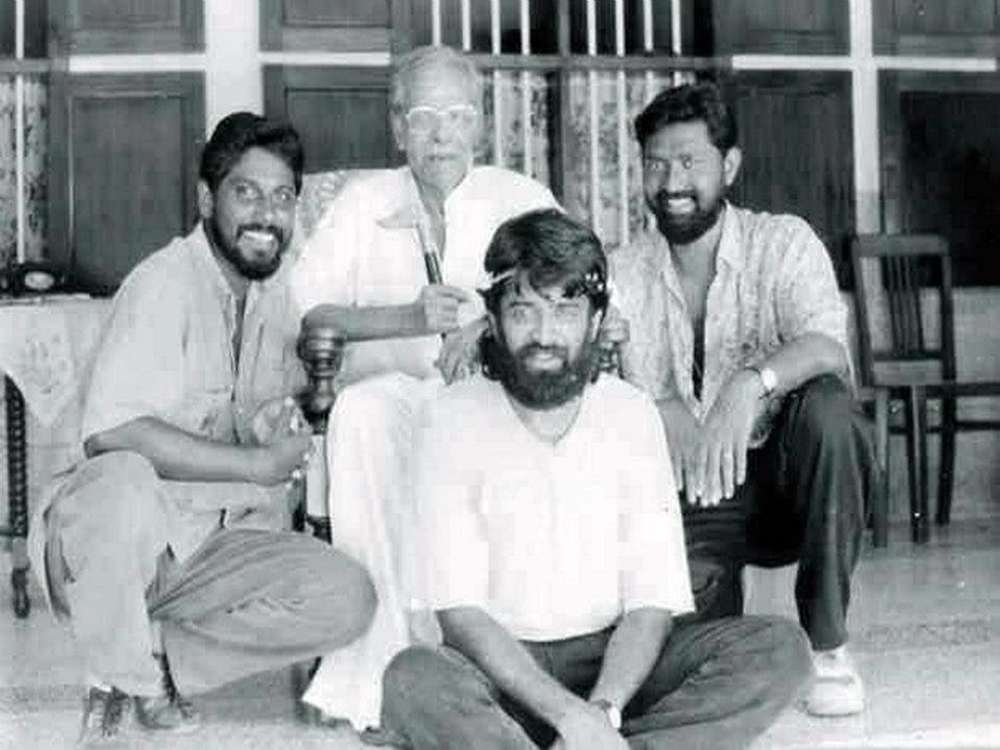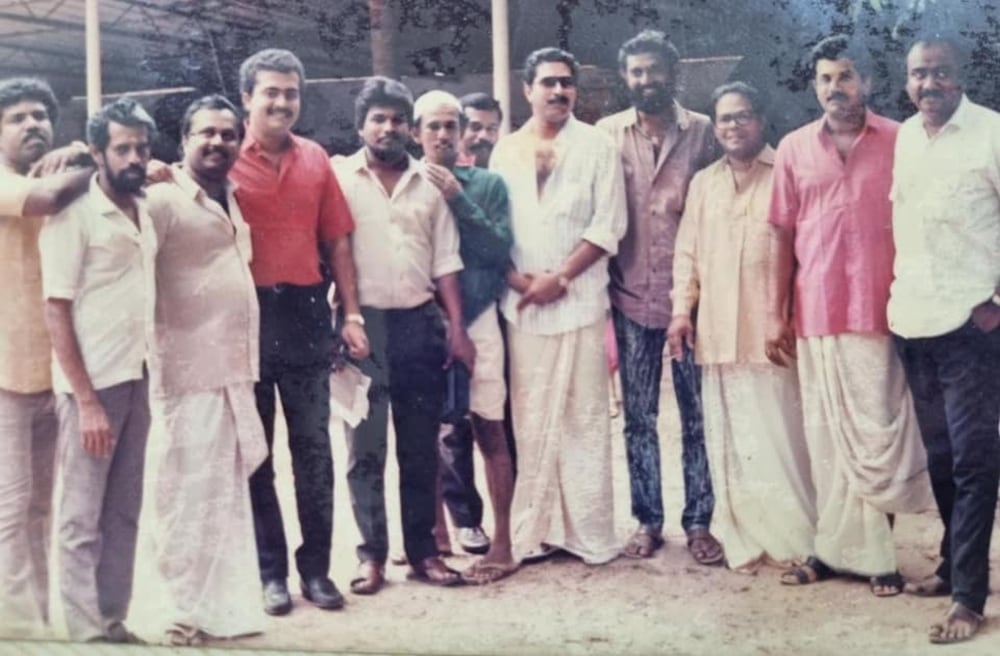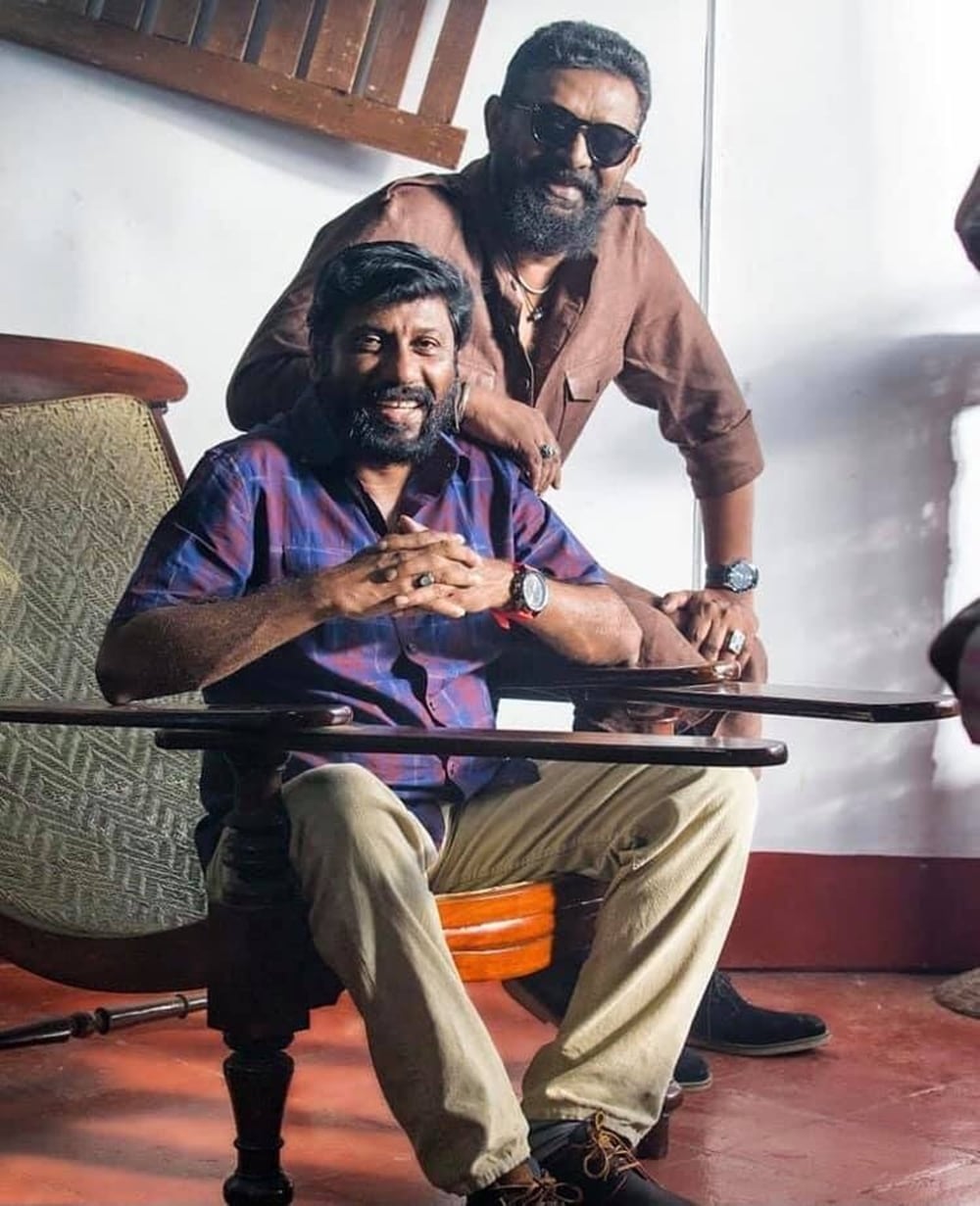Two youngsters, born and brought up in Kerala’s port city of Kochi, set out on a shared venture in the early 80s with a common dream: cinema. Both aimed to become writer-directors. Despite a span of time, the duo eventually achieved the milestone, commencing their directorial voyage in the year 1989. Their names, Siddque and Lal.
Cut to: Just a few years down the road, a report in Malayala Manorama newspaper stirred up quite a commotion in Kerala, “There will no longer be Siddique-Lal”. The pair themselves made the announcement. Numerous disheartened cinephiles and a multitude of journalists were left pondering, “Why?”

To this day, the real reason, if any, behind their unexpected professional split remains a mystery, even though they sustained a strong friendship post-separation, consistently asserting that they went their separate paths to pursue individual careers. Despite three decades having elapsed since their final joint directorial venture, the name Siddique-Lal endures.
How can it not be? The duo not only reshaped the landscape of Malayalam cinema (for the good or bad is a topic for another time) but also delivered some of the industry’s most monumental blockbusters. Throughout their collaborative career spanning five years, they directed merely five films — one per year. Yet, each of these films hit the mark, resulting in a flawless track record for the duo, void of any failures or even just moderate successes. The ripples of the impact caused by their creations resonated so powerfully that even other film industries across India took notice, leading them to queue up for opportunities to secure the rights to remake their films.
But, what set their films apart? Nothing and consequently, everything.
 Ramji Rao Speaking was Siddique-Lal duo’s first directorial venture. (Image: Lal/Facebook)
Ramji Rao Speaking was Siddique-Lal duo’s first directorial venture. (Image: Lal/Facebook)
Filmography (as writer-directors)
Ramji Rao Speaking (1989)
In Harihar Nagar (1990)
Godfather (1991)
Vietnam Colony (1992)
Kabooliwala (1993)
Simplicity
What endeared Siddique-Lal films to audiences was their inherent simplicity, featuring characters that seemed plucked right from everyday existence. For instance, Ramji Rao Speaking portrayed two jobless youths and a financially struggling middle-aged man in their quest for livelihood, while In Harihar Nagar showcased four youngsters who would stop at nothing to capture the attention of an attractive woman.
Godfather delved into a family feud, while Vietnam Colony illuminated the lives of residents in economically disadvantaged colonies, and Kabooliwala narrated the stories of often unnoticed homeless people residing by the roadside and those working in circus camps. None of their films featured extravagant tales or larger-than-life characters. The language employed, along with the colloquialisms used by the characters, also struck a chord and contributed to their effortless connection with audiences.
The recurring theme of unemployment
As Siddique and Lal transitioned into adulthood and became part of Kerala’s cultural scene during the 1980s, they found themselves amidst a period of jobless growth in India’s organised manufacturing sector. Hence, their movies, except Godfather, consistently highlighted the issue of unemployment, relatable to many. Consequently, many of the choices and actions the characters made were influenced by their endeavours to progress in life or were a response to the stagnation caused by joblessness.
Their debut film Ramji Rao Speaking skillfully delved into this theme, portraying the protagonists Balakrishnan (Sai Kumar) and Gopalakrishnan’s (Mukesh) struggles to secure jobs, and the third central character, Mannar Mathai (Innocent), facing financial challenges due to an ailing economy that had led to a decline in drama productions. While their unemployment and financial difficulties drove them to become intermediaries in a kidnapping plot, a similar lack of employment served as the motivating factor for the four young leads in the movie In Harihar Nagar. Despite not experiencing financial hardships, their inability/lack of interest to find work rendered them idle, with their only pursuits being wooing women.
Story continues below this ad
 Directors Siddique and Lal with actor NN Pillai and cinematographer Venu on the sets of Godfather. (Image: Lal/Facebook)
Directors Siddique and Lal with actor NN Pillai and cinematographer Venu on the sets of Godfather. (Image: Lal/Facebook)
This theme also resonated in Vietnam Colony, where G Krishnamurthy (Mohanlal) embarked on a dangerous mission to cleverly relocate an area because he was unable to find other jobs. Similarly, the repercussions of unemployment were evident in Kabooliwala too, where the main characters made a living by picking waste.
This core theme was present in both Nadodikkattu and Makkal Mahatmyam as well, for which the duo crafted only the stories.
Tightly-woven scripts
The scripts of Siddique-Lal consistently adhered to straightforward and fundamental guidelines, yet their effectiveness was such that audiences could fully engage with every moment in the films without encountering feelings of excessiveness or insufficiency.
The first acts of their works were primarily focused on introducing the main characters along with their goals and the environment they inhabit. These parts were also infused with humour and simultaneously offered a glimpse of the challenges faced by the central characters. The writer-directors consistently incorporated inciting incidents towards the end of the final acts to drive the gradual development of the storyline. As the narratives unfolded, the duo made certain to present both the highs and lows in the lives of the characters. Additionally, they integrated subplots that contributed meaningfully to the plot.
The duo never relied on separate comedic tracks, but rather seamlessly integrated humour into everyday situations, setting them apart from their predecessors. Concurrently, their scripts always featured a captivating midpoint that heightened anticipation for a more engaging second half. The latter portions, however, focused more on the emotional journeys of the main characters as they faced challenges from various angles. While comedic elements were present here too, they were carefully balanced so as not to overshadow the emotional aspects. All five movies concluded with extended climactic sequences, ensuring a sense of closure and leaving viewers wholly satisfied.
Catering to the male, elite viewers
Another notable factor that made Siddique-Lal movies popular among a broad audience was, unfortunately, their knack for appealing to male and elite viewers. In Ramji Rao Speaking, even though it was the least male-centric among their films, the story revolved around three men. Despite the female lead Rani’s (Rekha) apparent challenges, which were more pressing, her struggles were overshadowed by those of the men.
Story continues below this ad
In contrast, In Harihar Nagar featured four young men whose main objective in life was to attract the attention of women. The movie proceeded to depict them manipulating a woman into befriending them, believing that this would eventually lead to her falling in love with one of them.
 When megastar Mammootty visited the sets of Ramji Rao Speaking and posed for a picture with directors Siddique and Lal and actors Innocent, Mukesh and Sai Kumar. (Image: Lal/Facebook)
When megastar Mammootty visited the sets of Ramji Rao Speaking and posed for a picture with directors Siddique and Lal and actors Innocent, Mukesh and Sai Kumar. (Image: Lal/Facebook)
Godfather, despite the introduction of a female antagonist, Aanappara Achamma (Philomina), who was equally powerful as the patriarch Anjooran (NN Pillai), also catered to male audiences by vilifying women in general. In the case of Vietnam Colony, the main character Krishnamurthy’s behaviour towards Unnimol (Kanaka) resembled the disrespectful manner in which school-going boys treat girls, influenced by society’s misogynistic attitudes. Similarly, Kabooliwala also reinforced common male perceptions of women as arrogant, opportunistic and gold-diggers.
At the same time, the manner in which these films portrayed male lead characters embracing their caste Hindu identities also played a role in their successes. At a time when discussions about political correctness were far from being popularised, the unapologetic display of these aspects significantly contributed to the considerable success of these films.
Dialogues and one-liners
Siddique and Lal reigned supreme when it came to crafting dialogues and one-liners, as a result of which a majority of viewers still have these lines etched in their memories, particularly the humorous ones, which they frequently integrate into their everyday interactions. Their brand of humour largely stemmed from genuine life situations rather than slapstick, rendering their one-liners seamlessly applicable to real-life conversations. The fact that the dialogues listed below originated from only five films, yet continue to hold treasured positions in the daily language of Malayalis, stretches the boundaries of belief.
* Illa undilla, unnan pone ollu, unnana?
* Nintekke malam parishodhikkal alle ente pani
Story continues below this ad
* Onnukil kalarikku purath, allenkil aashante nenjath… nenjath ennu paranja ethaandu ee bhagath aayittanu ivaru eriyuka…
* Athokke Gopalakrishnante oru number alle…
* Kambili pothappee…
* Erangivada thorappa… sorry, ingalalla… veroru thorappan indu…
* Panam innu varum, naale pokum… naale varum, mattannal pokum… naalam naal onnayittoru pokku indu…
* Ningal ippol pravarthippichukondirikkunna upakaranam, ath off cheyyan!
* Oru thokku kitteettindtta… avasanam thokku kalla enu parayaruth, karutha thokka…
* Thomaskutti, vittoda!
* Yogasanam cheyyathe thanne ivante gas poyi
* Ivante achan Kuwaitil alle? Ellarum madangi vannittum angeru vannillallo? Itha varathath!
* Athinu avaru chaayem kaachikondu vannal alle pattoo
* Entamme, aa thallakku praanthada
* Koottukaranu praanthayi poyi enuvachu njangalkku upekshikkan pattuvo?
* Entha, penkuttikalkku ingane simple dress dharikkunna purushanmare ishtamalle?
* Kaakka thoori…
Story continues below this ad
 Directors Siddique and Lal (Image: Lal/Facebook)
Directors Siddique and Lal (Image: Lal/Facebook)
* Ith njan chanthi kazhukunna kaiyaa… ninne naattan ith mathi
* Thali aane panineeru… ivide thali aane panineeru
* Marakkano? Enthokkeyado njan marakkendath?
* Nee enthina padikkanennu?
* Ente daivame, appo kudumbadakkam kallanmar aanu
* Kerivada makkale, keri vaa
* Disc edukkanam Madhavi amme, disc edukkanam
* Vannu 10 minute aayittilla, athinu mumbu enth aakrama iyaal ee kaanikkane?
* Enikku chicken curry!
* Ithalla, ithinappuram chaadi kadannavan aanu ee KK Joseph!
* Ithaanu aa rekha… ente kayyilulla rekha
* Kaineettam vaikeettu aayal kuzhappam undo?
* Telungonnum paranju virattandada annachi
 (Then and now) Siddique and Lal with their friends and colleagues from Cochin Kalabhavan. (Image: Lal/Facebook)
(Then and now) Siddique and Lal with their friends and colleagues from Cochin Kalabhavan. (Image: Lal/Facebook)
Fully-developed (iconic) characters
Thanks to the duo’s meticulous focus, many of the pivotal characters in Siddique-Lal films continue to remain indelible.
The thorough development of character arcs extended beyond just the main protagonists; Siddique and Lal also made sure that even the supporting characters underwent meaningful transformations. This approach aimed to make these characters equally unforgettable to the audience and ensure their lasting presence, a notion that historical evidence has indeed validated.
From Mannar Mathai, Balakrishnan, Gopalakrishnan, Ramji Rao, Hamzakkoya, Mahadevan, Govindan Kutty, Appukuttan, Thomas Kutty, John Honai, Anjooran, Aanappara Achamma, Balaraman, Swaminathan, Mayin Kutty and Kochammini teacher to KK Joseph, Rawther, Pattalam Madhavi Amma, Erumeli, Vattappalli, Kannaas, and Kadalaas hold special places in the hearts of Malayalis. This is due to the manner in which the writer-directors delved into the multifaceted dimensions of these characters, ensuring their diverse traits were authentically portrayed without succumbing to monotony.
Story continues below this ad
Regrettably, one of the two maestros, Siddique Ismail, breathed his last in Ernakulam on August 8, leaving behind a profound legacy. Siddique’s passing marks the end of a unique era.




 Ramji Rao Speaking was Siddique-Lal duo’s first directorial venture. (Image: Lal/Facebook)
Ramji Rao Speaking was Siddique-Lal duo’s first directorial venture. (Image: Lal/Facebook) Directors Siddique and Lal with actor NN Pillai and cinematographer Venu on the sets of Godfather. (Image: Lal/Facebook)
Directors Siddique and Lal with actor NN Pillai and cinematographer Venu on the sets of Godfather. (Image: Lal/Facebook) When megastar Mammootty visited the sets of Ramji Rao Speaking and posed for a picture with directors Siddique and Lal and actors Innocent, Mukesh and Sai Kumar. (Image: Lal/Facebook)
When megastar Mammootty visited the sets of Ramji Rao Speaking and posed for a picture with directors Siddique and Lal and actors Innocent, Mukesh and Sai Kumar. (Image: Lal/Facebook) Directors Siddique and Lal (Image: Lal/Facebook)
Directors Siddique and Lal (Image: Lal/Facebook) (Then and now) Siddique and Lal with their friends and colleagues from Cochin Kalabhavan. (Image: Lal/Facebook)
(Then and now) Siddique and Lal with their friends and colleagues from Cochin Kalabhavan. (Image: Lal/Facebook)































